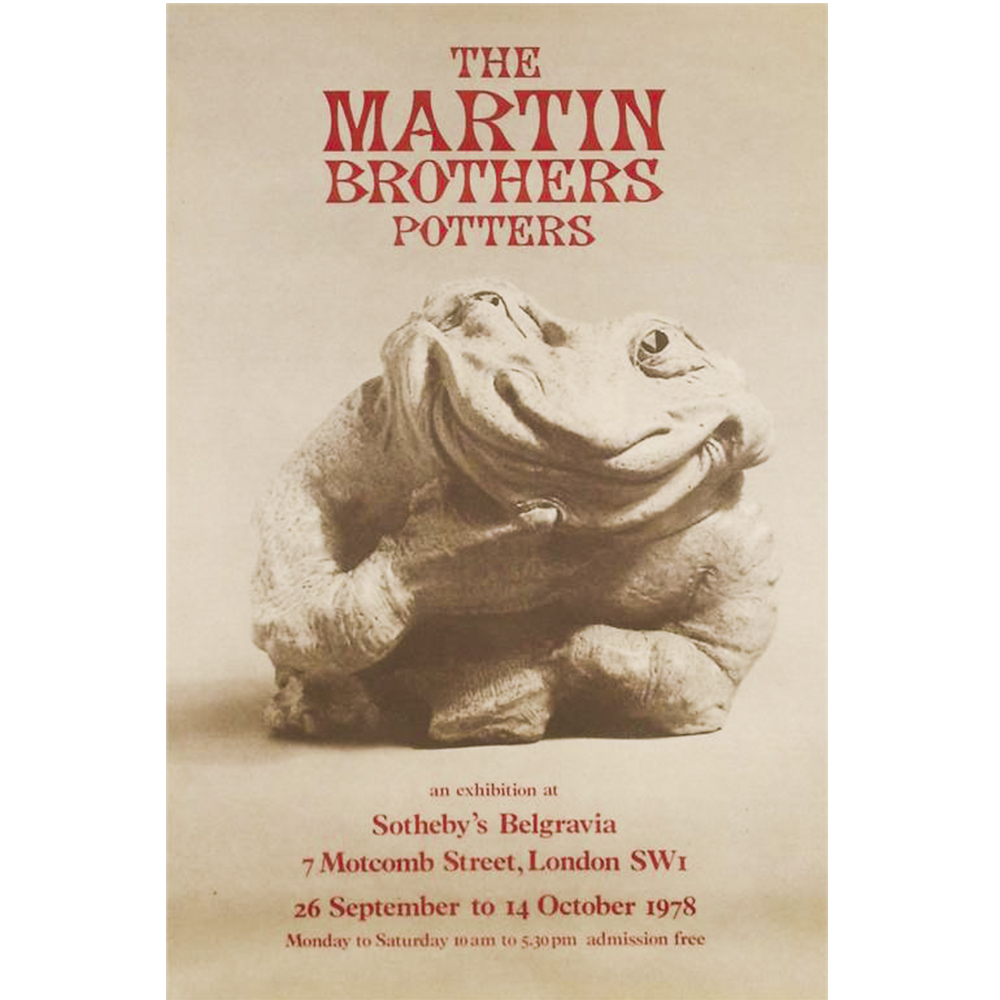by Louise Irvine
The current #CuratorBattle for the #CreepiestObject in a museum had us exploring WMODA for our scariest candidates. This sinister face jug by the Martin Brothers is a strong contender as well as this grotesque creature. What do you think?
Many of our WMODA visitors stop in their tracks when confronted with the more bizarre creations of the Martin Brothers. Robert Wallace Martin, the eldest of the four brothers, is renowned for his wally bird jars lampooning character types of the Victorian era. However, equally strange are his leering face jugs inspired originally by his fascination for pagan antiquity.
A journalist visiting the Martin Brothers shop in London in 1910 described his experience, “When you enter the shop… you find yourself in a dim-lit passage with crowded shelves of stoneware jugs carved into leering, laughing, grinning and ogling heads, jostling with the most impossible, and most fascinating, pot birds with strangely anthropological expressions…” The shop was run by Charles Martin and resembled the Old Curiosity Shop in its chaos and confusion. Apparently, Charles was the most eccentric of the brothers although he did try to curb some of Wallace’s wildest fantasies for commercial purposes. However, he hid his favorite pieces from potential buyers, so the business was never a success and the potters earned meagre wages. Ironically, the most extraordinary works by the Martin Brothers fetch record prices today as avid collectors compete for the curiosities.
Strange faces began to creep into Wallace’s work in the 1880s. His tall Eskimo jugs, with an Inuit figure enveloped in fur, reference the contemporary excitement over polar expeditions reported in the press. A sinister stoneware bottle with a smirking face surrounded by bearded barley symbolizes John Barleycorn, a poetic personification of barley and the process of growing the crop to produce beer and whisky. Dionysian masks of Pan and Bacchus were incised on stoneware vases and jardinieres, prompted by Wallace’s reading of idyllic 18th century poetry which experienced a revival in the Victorian era. The jugs modeled with a human face on two sides were inspired by Janus, the two-faced Roman god of beginnings, endings and transitions. He is depicted with two faces since he looks to the future and to the past. Perhaps Wallace was familiar with the glass Janus bottles holding incense and perfume which were found in Roman tombs.
Certainly, Wallace would have known the salt-glazed stoneware Bartmann jugs, featuring a bearded man, which were made in Germany in the 16th and 17th centuries and transported as containers all over Europe and with early colonists to the Americas. They became known as Bellarmines to ridicule cardinal Robert Bellarmine (1542-1621), an opponent of Protestantism and alcohol. The bearded face is believed to have originated from the mythical wild man popular in northern European folklore, who can be compared with the satyrs of classical mythology. The malevolent features on the stoneware bottles sometimes led to their use as Witch bottles filled with magical charms, human hair, nail clippings, and urine, which were supposed to protect their owners or harm their enemies.
A devoutly religious man, Wallace Martin was obsessed with evil in the world. He once described his visions, “My daydreams and my nightly visions teem with Gothic…. through loopholes which barely distinguished the gloom within I have seen strings of sleeping bats and in darksome chambers found quaint carvings never intended to see the light.” Gothic gargoyles and medieval monsters haunted Wallace’s dreams along with strange hybrid beasts evoked by Lewis Carroll’s Wonderland and Edward Lear’s Book of Nonsense. It was once said that Lear, Carroll and Martin dreamed similar dreams but only Wallace dreamt them in clay and baptized them with flame. The 1981 landmark exhibition of the Martin Brothers work, entitled Boobies, Boojums and Snarks, opened on Broadway, NY on Halloween night. The Jordan Volpe gallery created a fantasy setting, straight out of a horror story. Eerie sounds, water dripping in a darkened pool, and gnarled trees with live moss all helped to conjure up the tortured souls of the Martin brothers.
Wallace made some of his creepy creatures into spoon warmers for the Victorian table. Novelty spoon warmers containing hot water first became popular in the 1860s to prevent gravy and other fatty sauces from congealing on serving spoons in cold dining rooms. It is hard to identify the grotesque, open-jawed beast which forms the WMODA spoon warmer, but he must have sparked some interesting dinner conversations. Prehistoric animals and mutations were popular topics for debate in the wake of Darwin’s theories of evolution, published in the Origin of the Species and the Descent of Man. One of the creepiest creatures at WMODA seems to be a cross between a hideous hobgoblin from a medieval gargoyle and a distorted dinosaur. Wallace’s grotesques also reflect satirical cartoons in the press, such as William Heath’s Monster Soup, in which a woman drops her teacup on viewing Thames drinking water through a microscope.
As with his bird jars, Wallace’s face jugs were sometimes subversive caricatures of pillars of the establishment. Haughty barristers, overbearing judges and controversial politicians were mocked in his grotesque designs. Chamberlain and Balfour, opponents on tariff reform in the early 1900s, were portrayed as a confrontational two-faced jug. Brother Jonathan and John Bull, the personifications of America and England, were lampooned on a two-sided jug in 1898. We can only speculate who owned the unfortunate features in the WMODA examples!
Read more about the Martin Brothers and their Wally Birds...
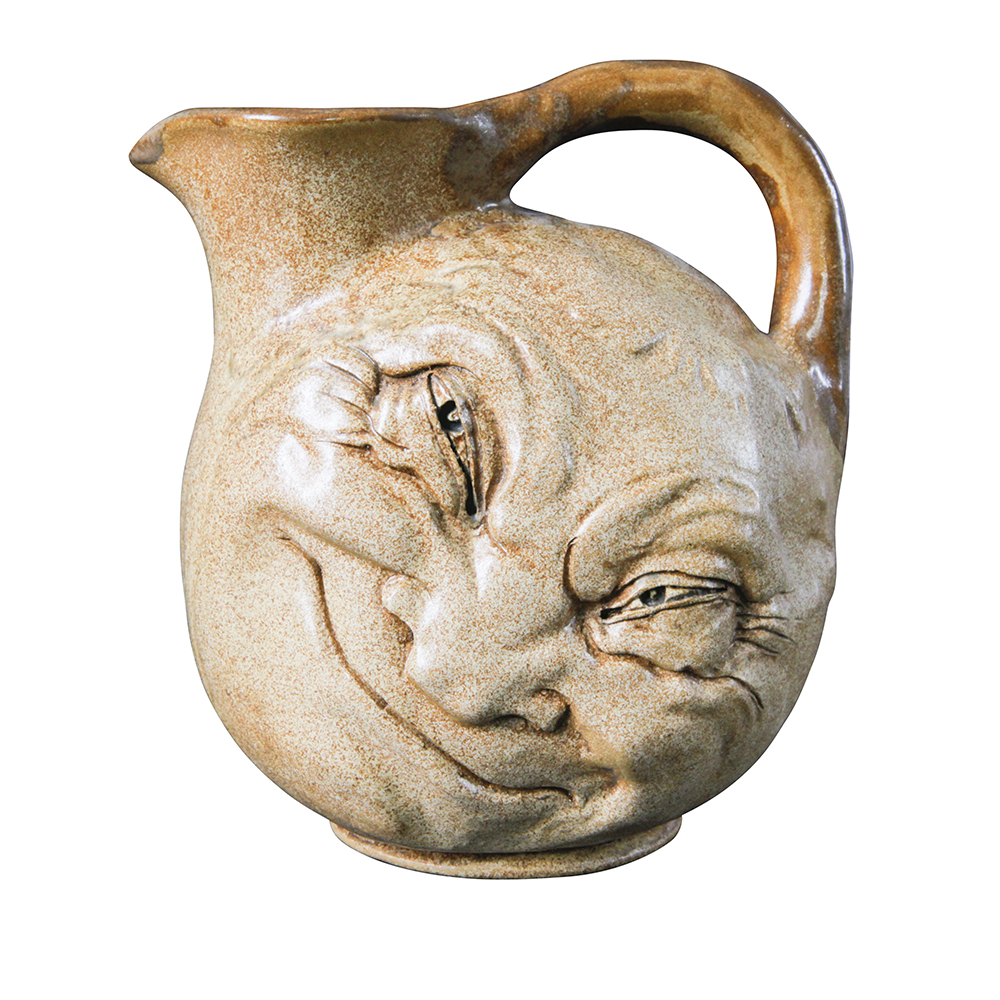
Face Jug by R.W. Martin 1890

Grotesque Creature by R.W. Martin c.1890

Grotesque Creature by R.W. Martin c.1890
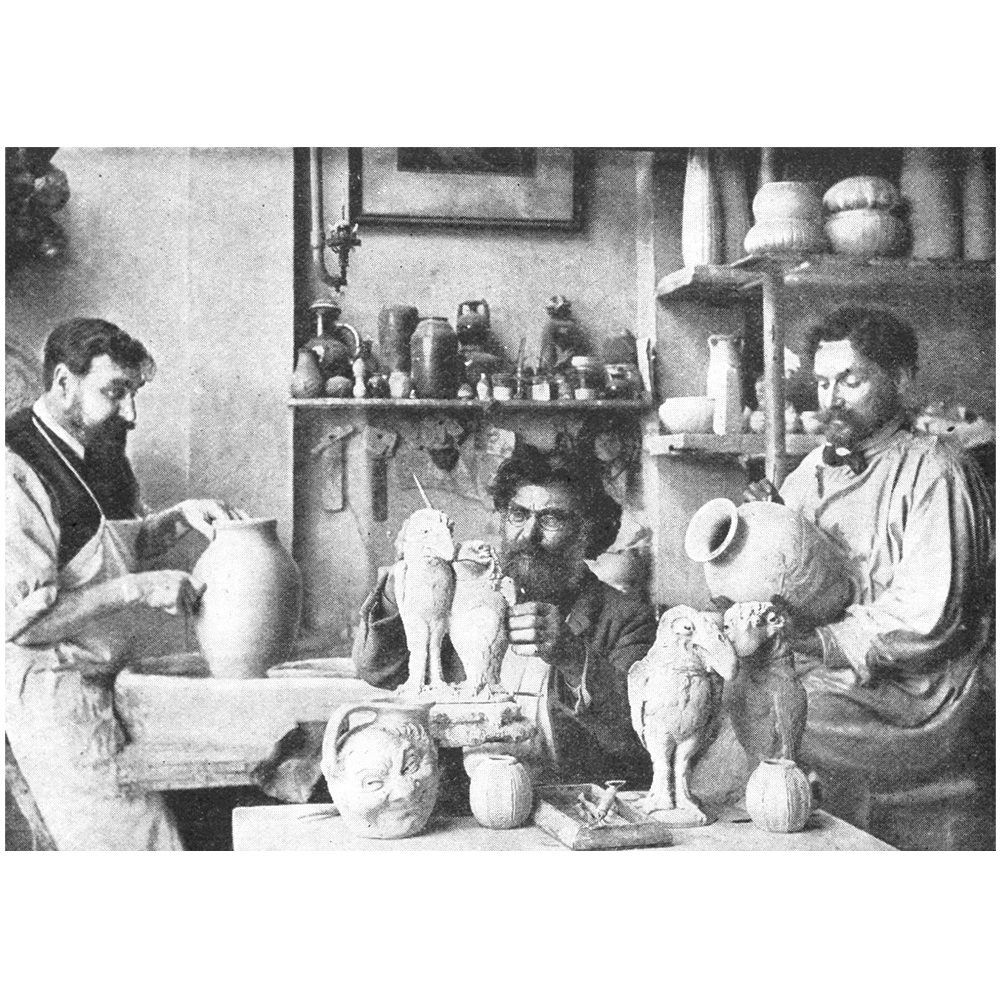
The Martin Brothers

Walter Fraser Martin
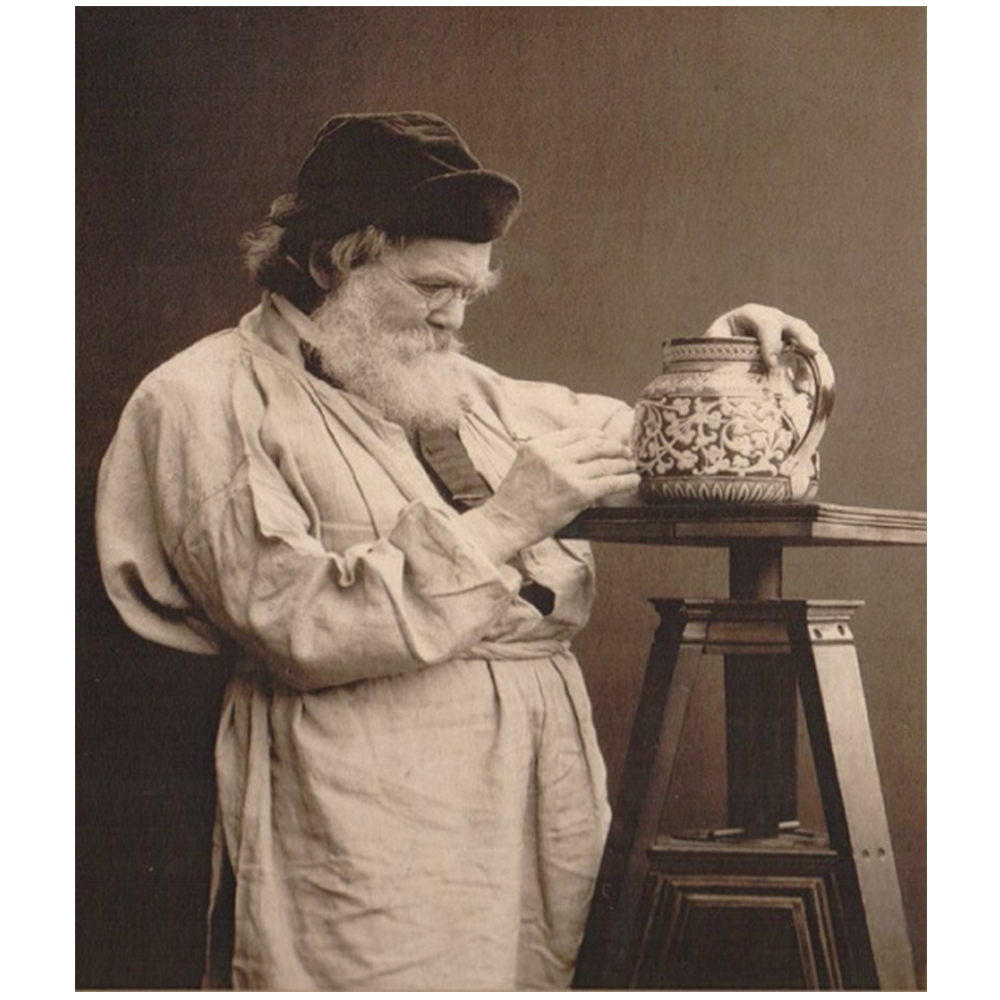
Robert Wallace Martin

Charles Douglas Martin

Eskimo Jug by R.W. Martin c.1880

Detail Mask Jardinière
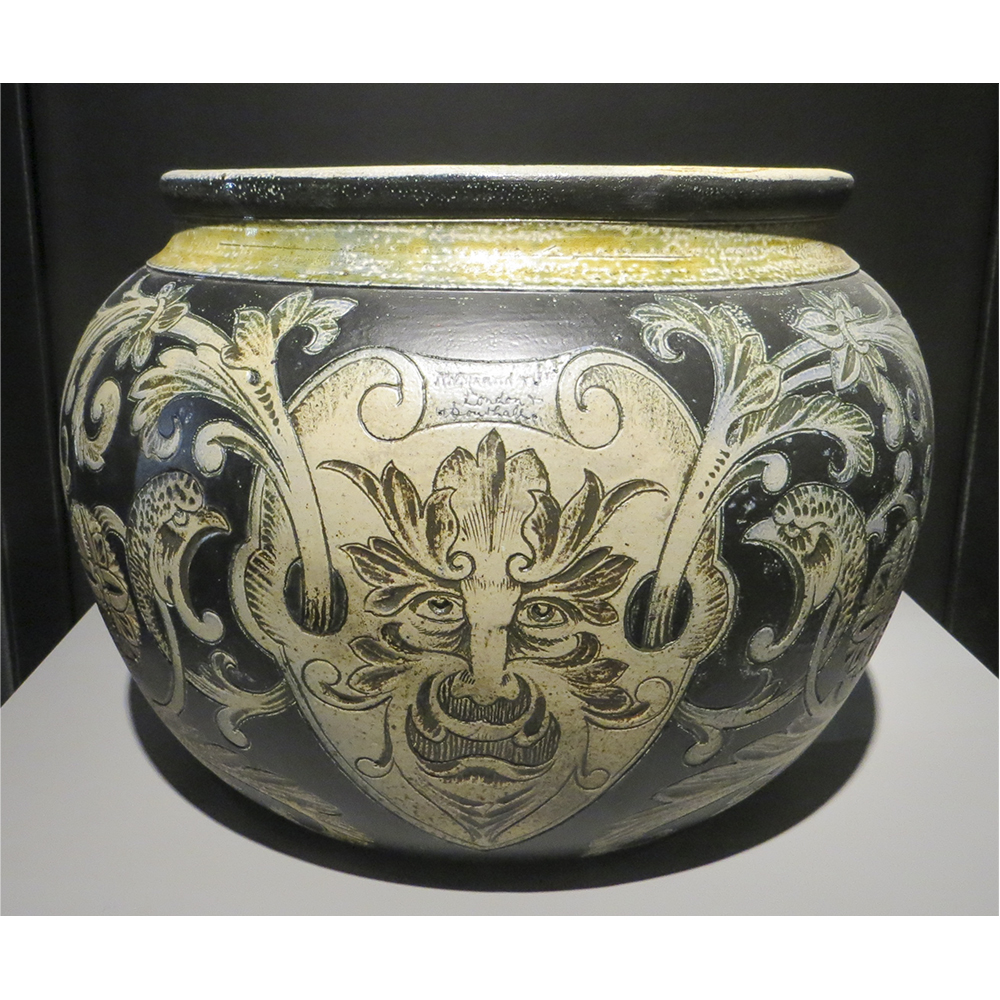
Mask Jardinière
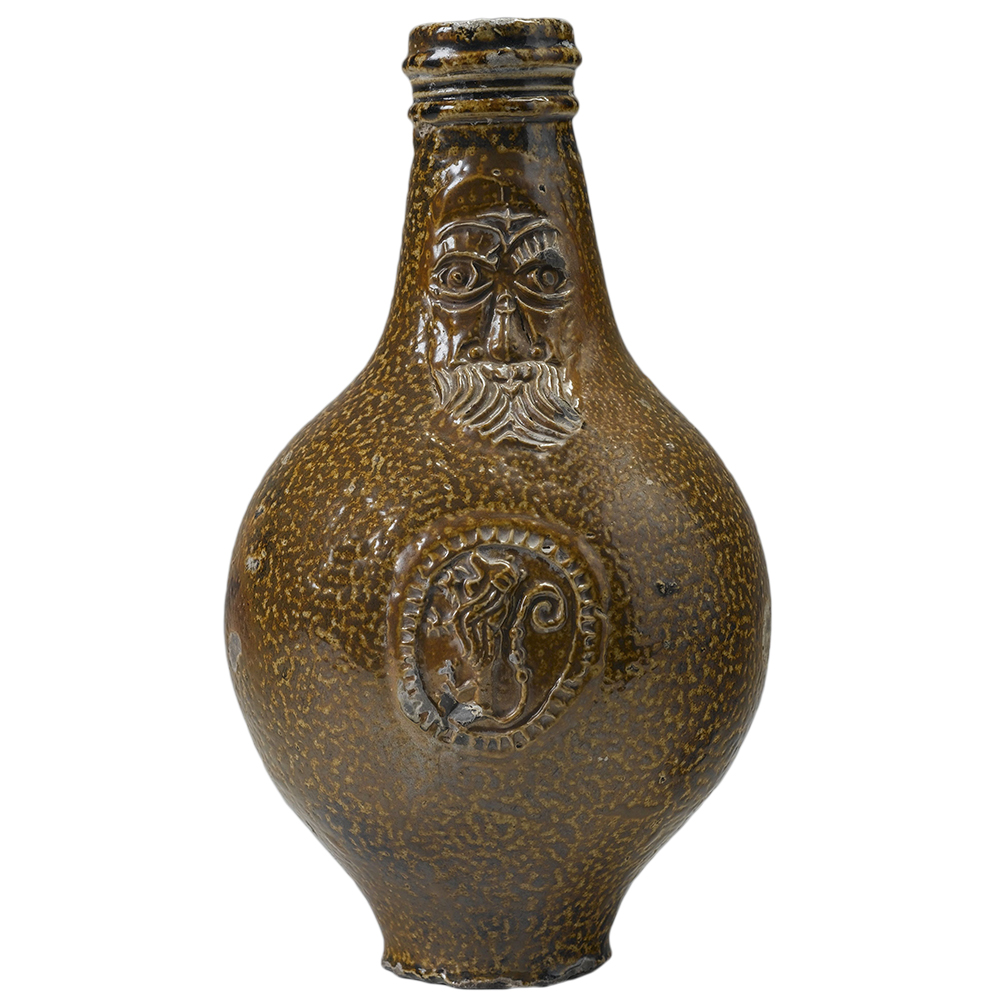
Bartmann or Bellarmine Jug c.1700
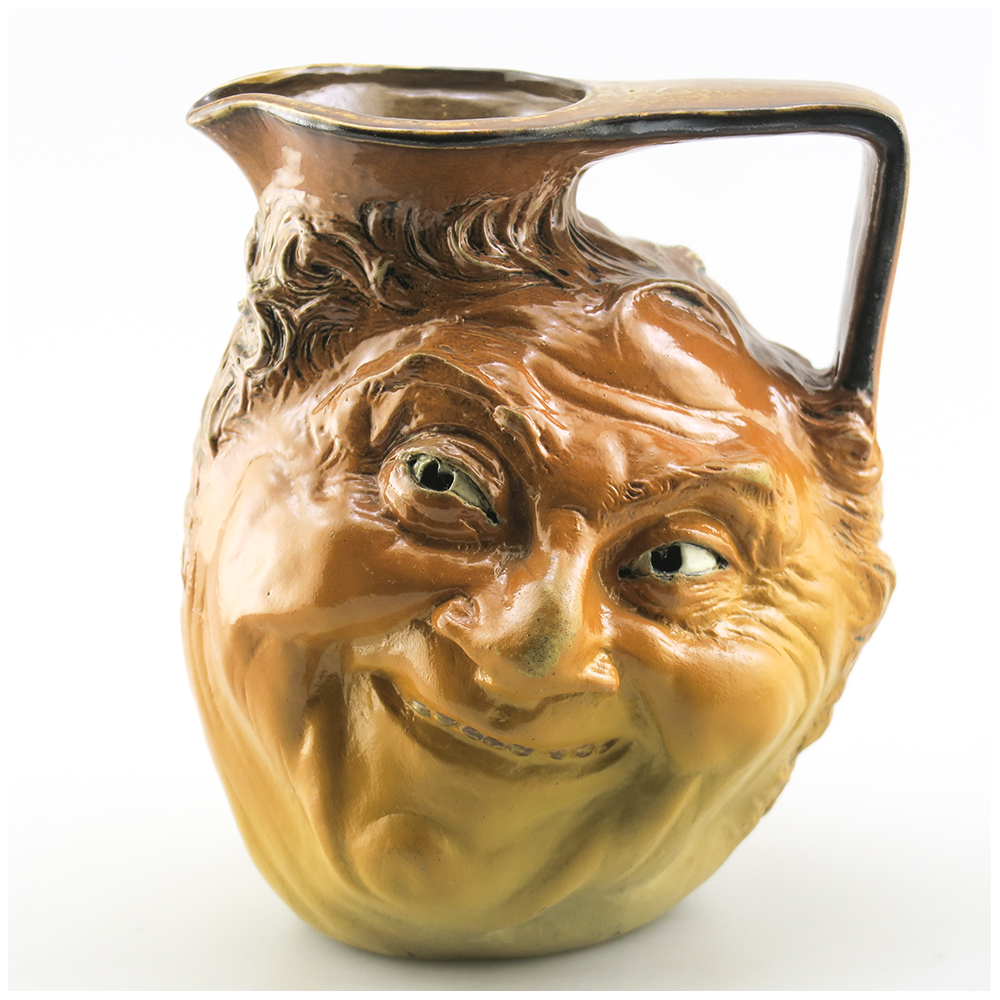
Face Jug by R.W. Martin 1899
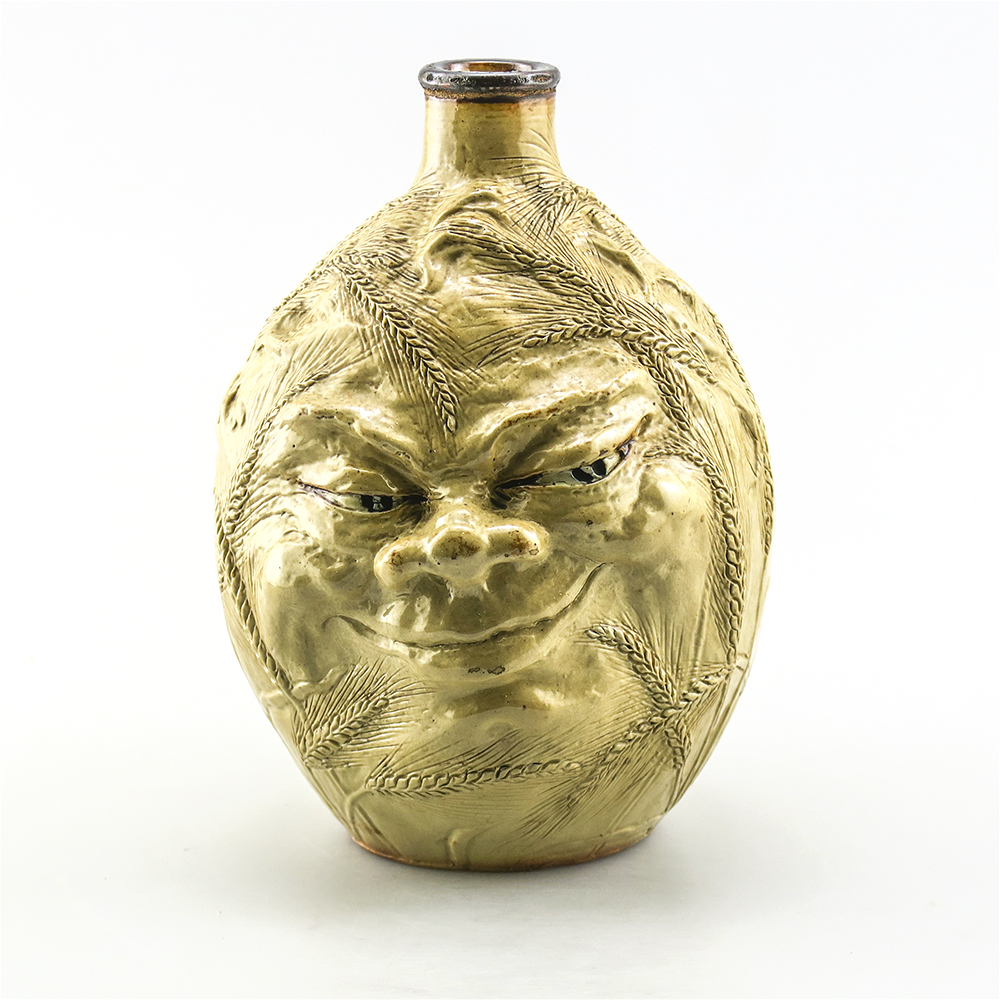
John Barleycorn 1909
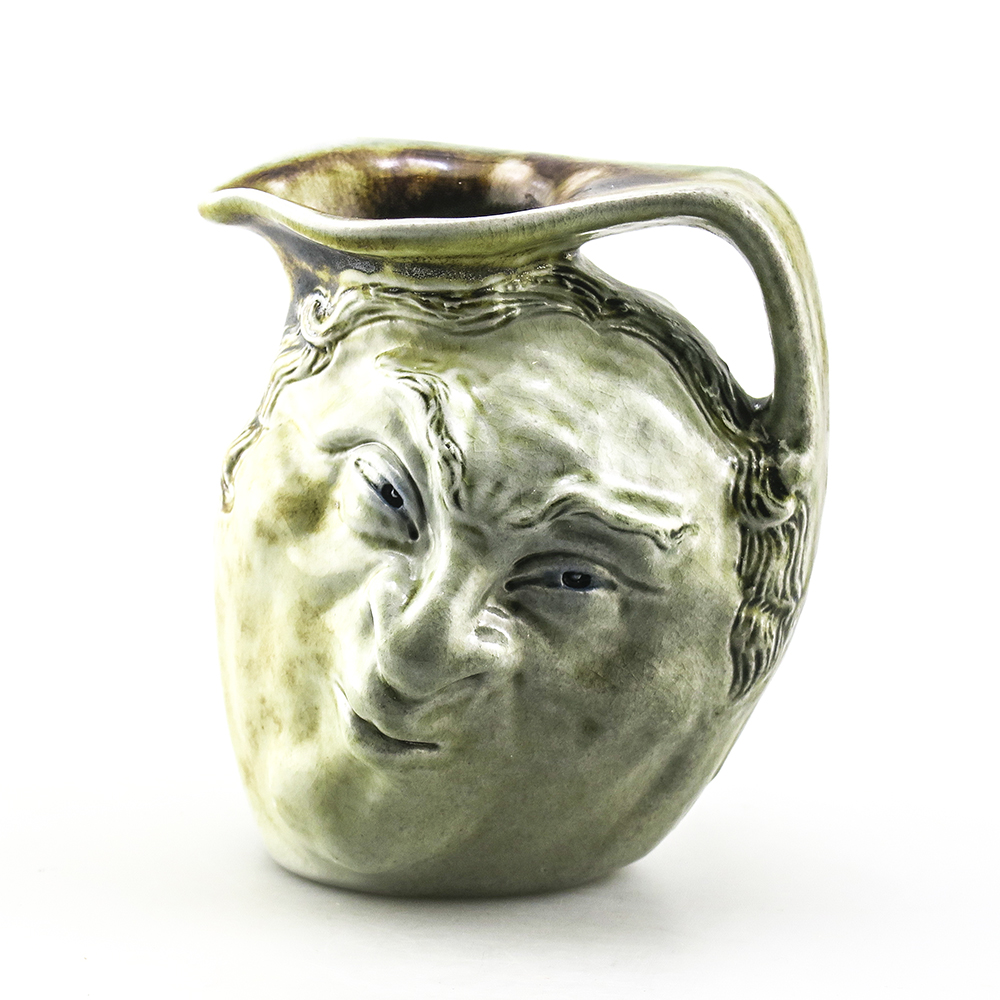
Face Jug by R.W. Martin c.1900
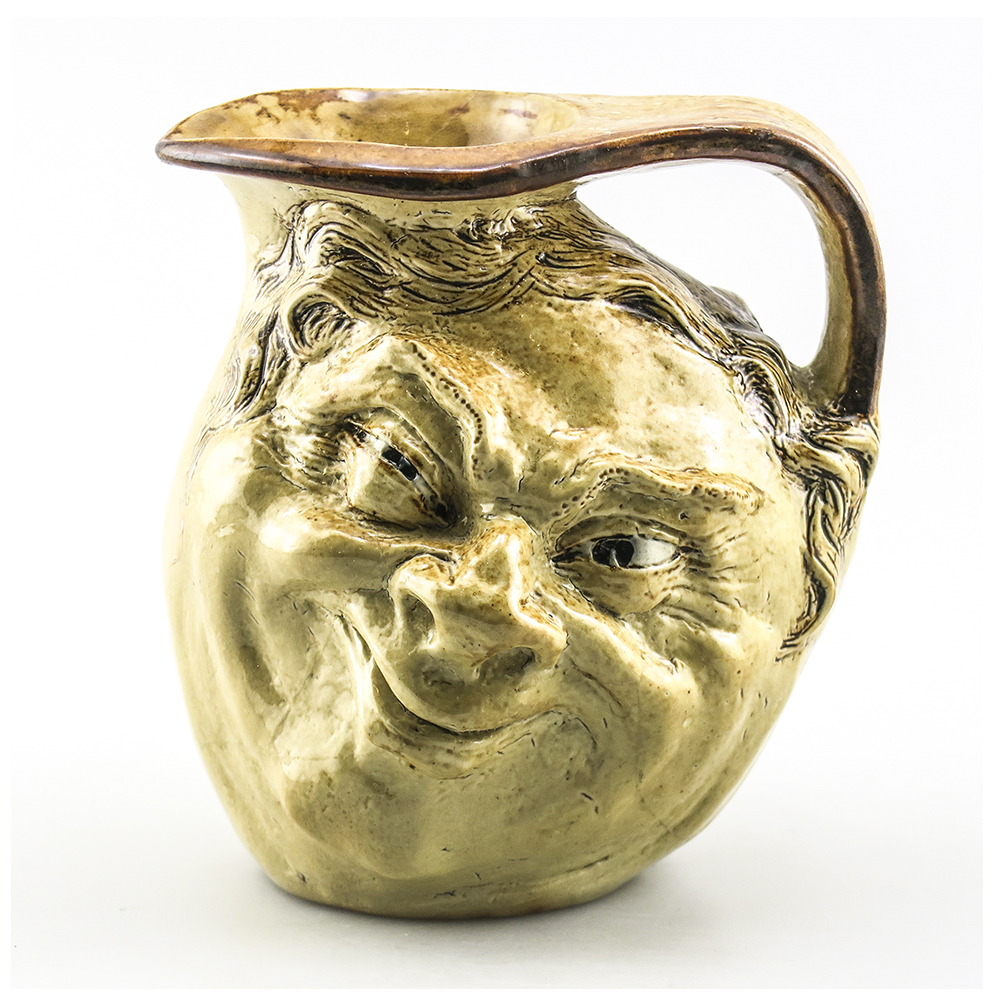
Face Jug by R.W. Martin 1899
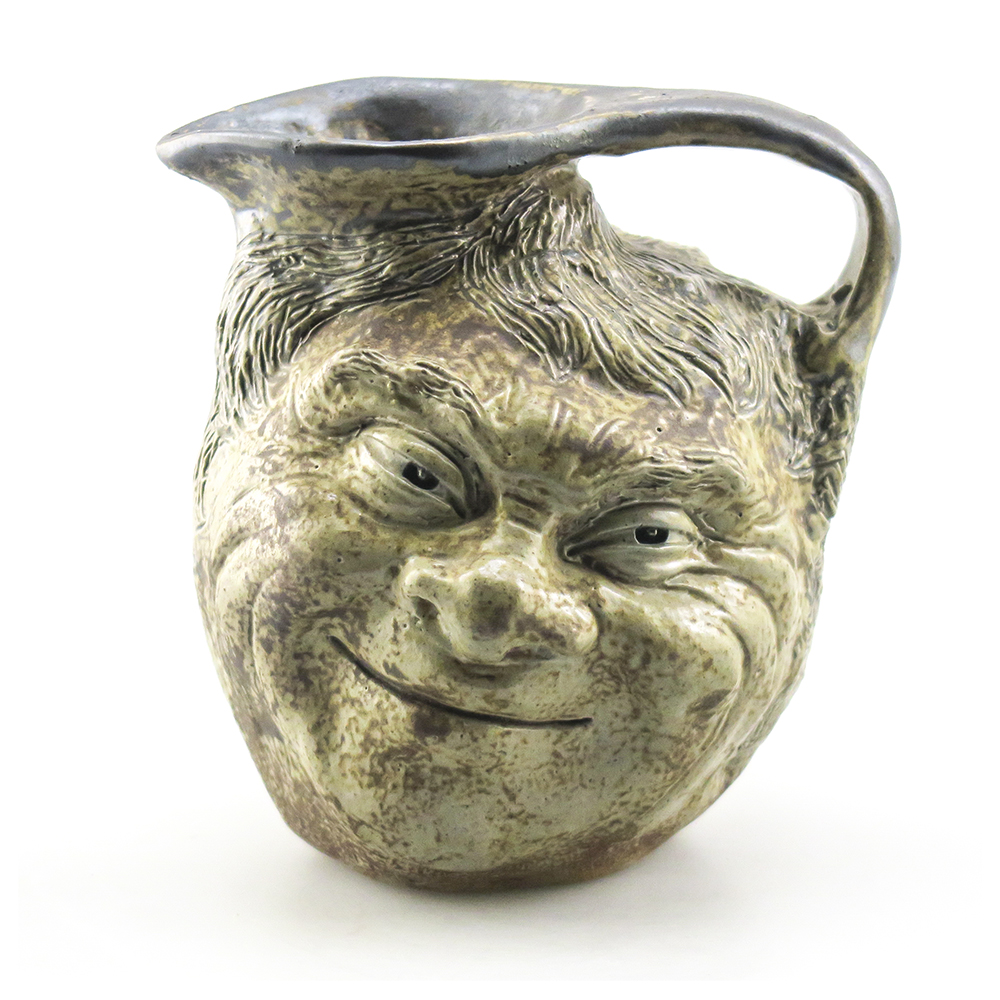
Face Jug by R.W. Martin 1910
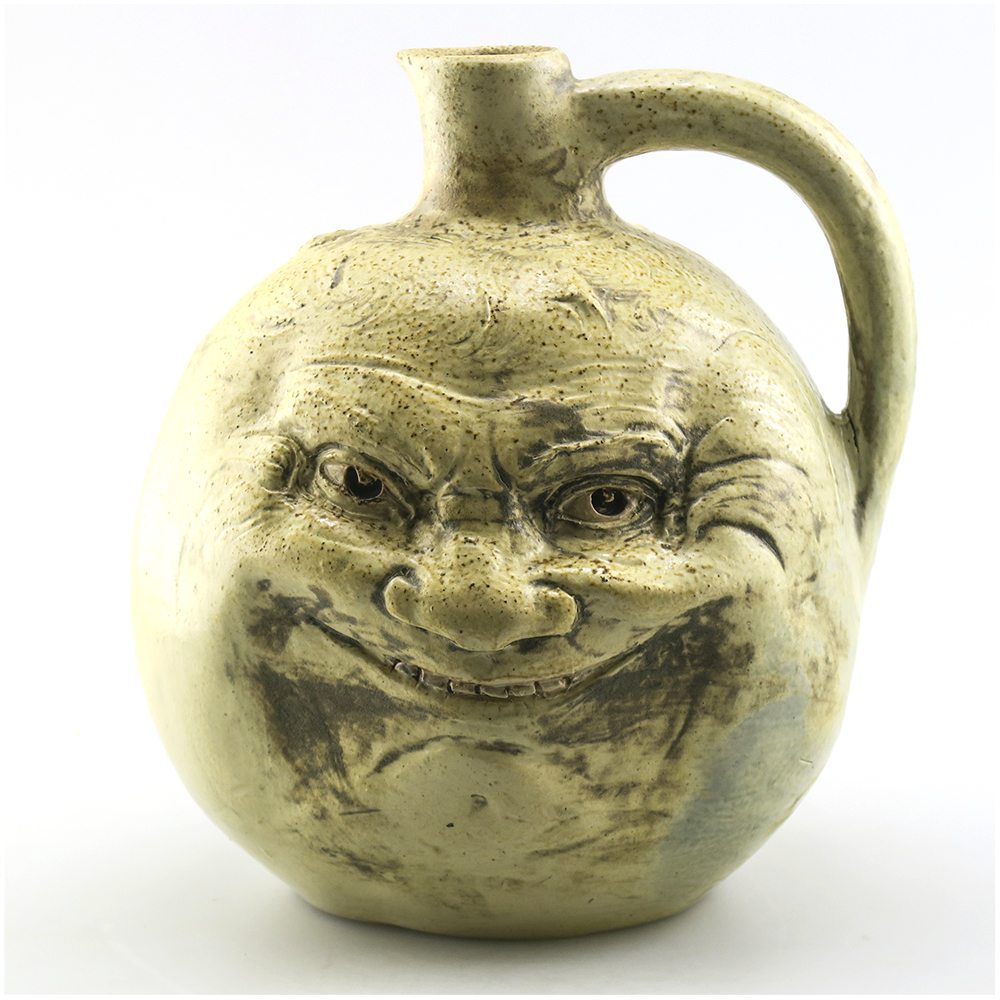
Face Jug by R.W. Martin c.1900

Grotesque Spoon Warmer by R.W. Martin c.1900
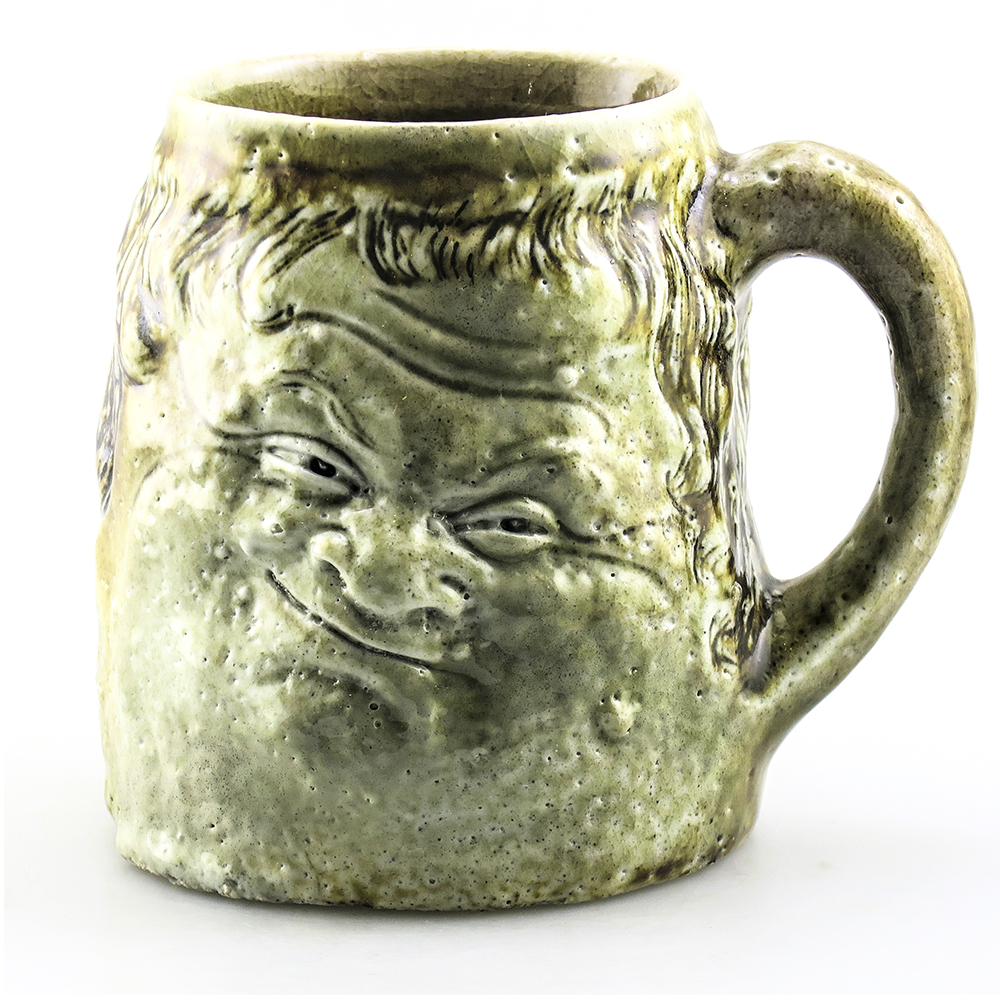
Face Mug by R.W. Martin c.1890
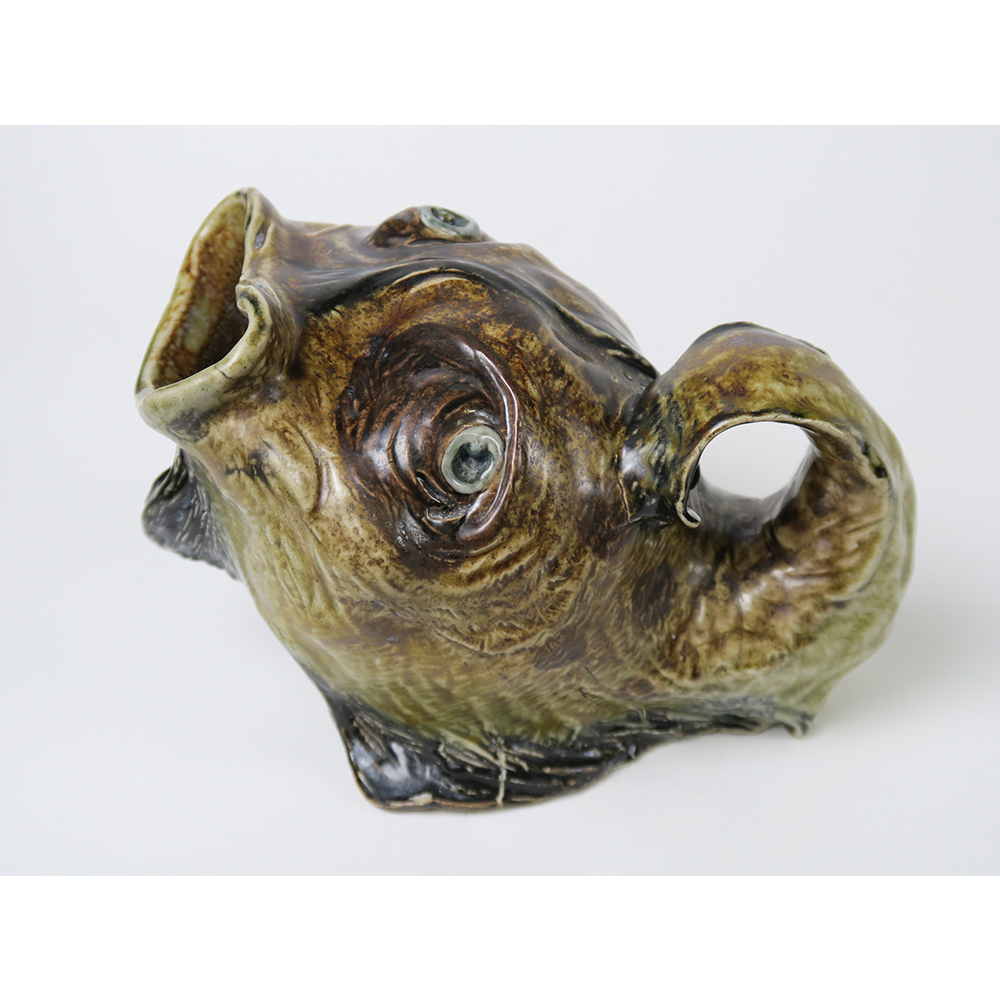
Grotesque Fish Spoon Warmer by R.W. Martin c.1900
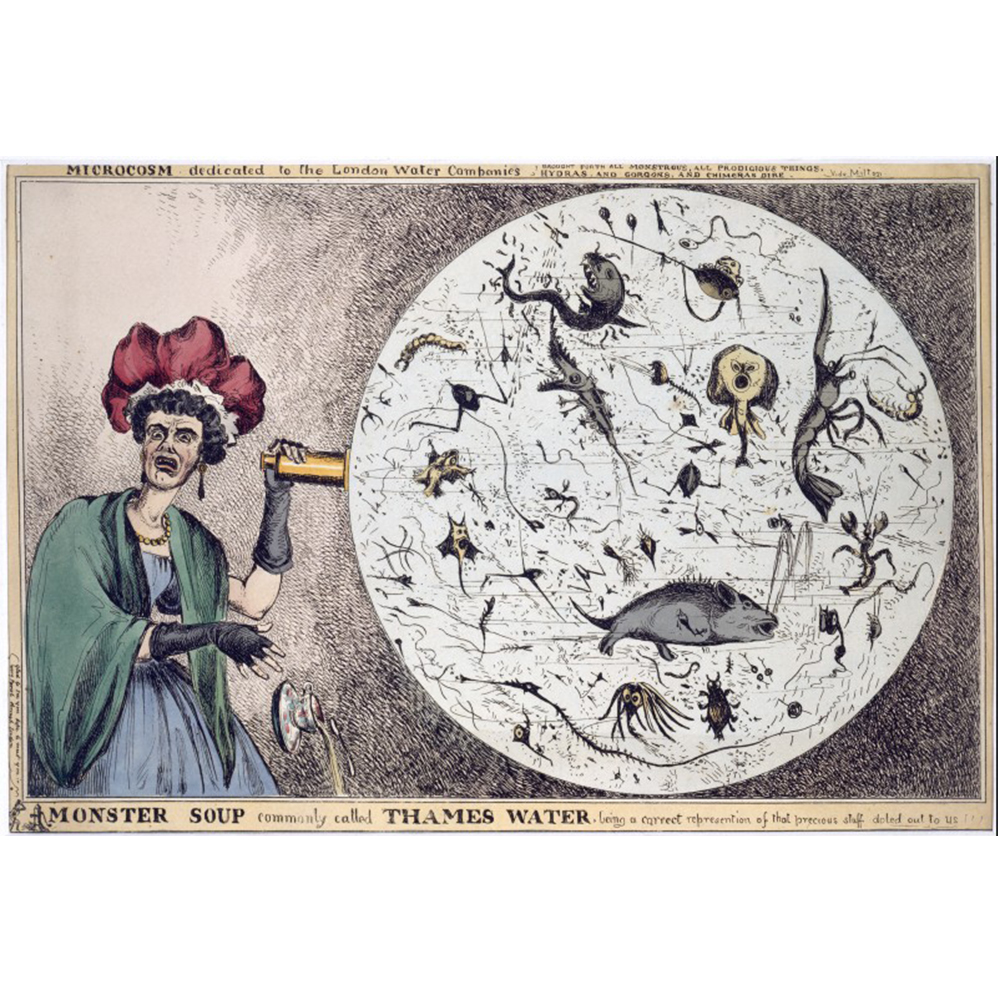
Monster Soup Thames Water by W. Heath c.1828

Gargoyle from Westminster Abbey London
